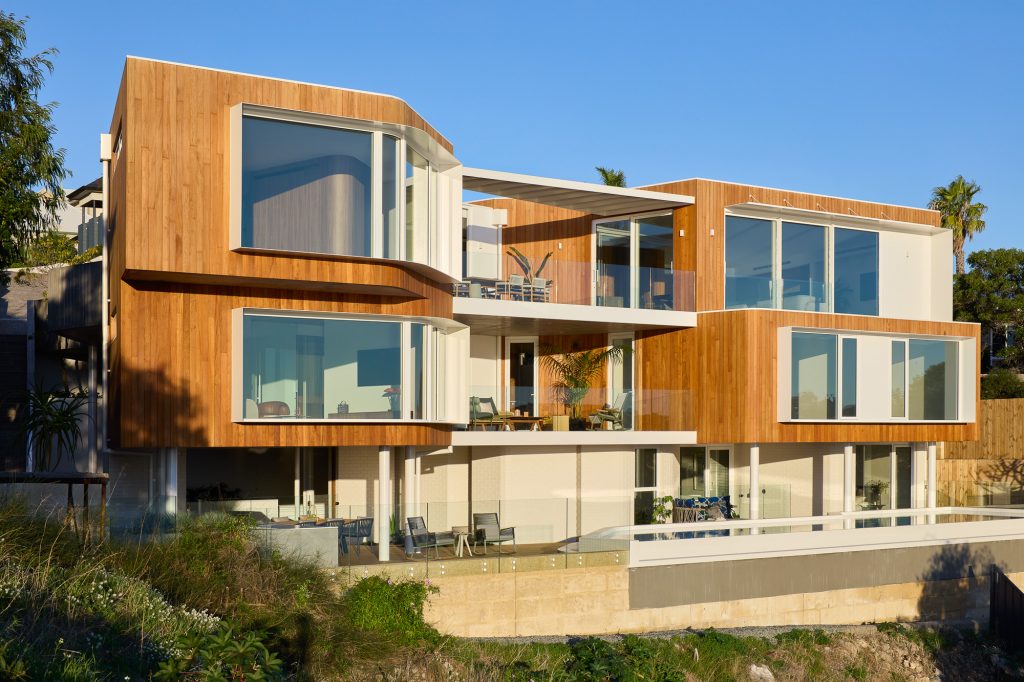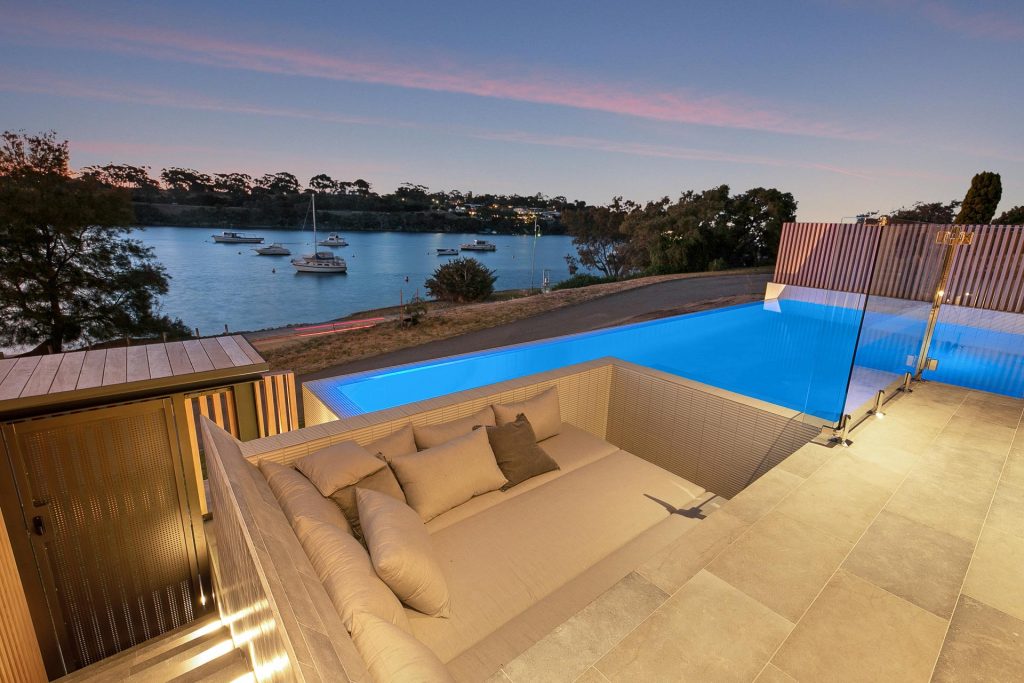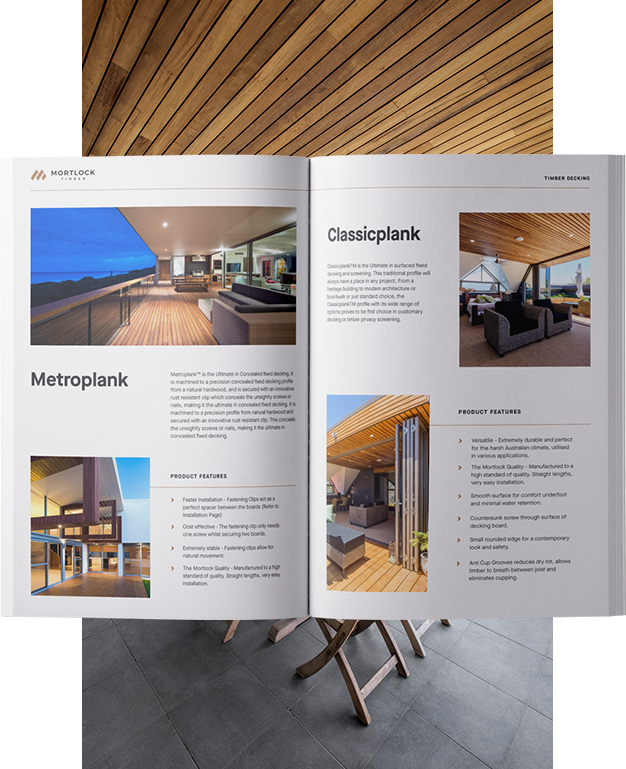Why (and how!) to use the principles of biophilic design to transform your project.

Biophilic design principles can help improve human health and well being, according to a growing body of research. Architects and designers across the world use the concept of biophilia – our innate connection to nature – to inspire homes, workplaces and other built environments.
In this article, we explore a number of key biophilic design principles and the benefits of using them. To wrap your head around what exactly biophilic design is, check out our article ‘What is biophilic design in architecture?‘ for more information.
Why use biophilic design?
Emerging research from around the world is showing that biophilic design has benefits for human mental health and wellbeing.
In workplaces, it can improve productivity, creativity and employee satisfaction. In health care settings, biophilic design can promote faster healing and recovery. It’s also connected to reduced stress, improved mental well being and a rise in overall quality of life.
Biophilic design principles are closely linked with sustainable design. Embracing natural patterns, forms and materials can lead to a more environmentally friendly built environment.

7 Biophilic design principles you can use at home
Biophilic designers find inspiration in a wide range of natural environments. Patterns, forms, shapes and sensations from the natural world are used to create functional built environments that promote human health and well being.
Biophilic strategies are often classified as either a direct experience or indirect experience of nature. Common biophilic design principles are explained below.
1. Visual connection with nature
Being able to see elements of nature from within your home or workspace can have psychological benefits. Large windows, skylights and open plan living can help address this.
Creating indoor spaces which flow naturally to outdoor spaces is also an effective way to improve human-nature connection. If access to natural spaces is limited, indoor plants, green walls and nature-inspired art can also be beneficial.
In Action
In this Infinity Views residence, large windows provide uninterrupted views of the river. Parts of the building are “see through” from front to back, creating the feeling that the building is part of the surrounding landscape.
2. Natural materials and textures
Natural materials such as wood, stone, cork and straw can be used to bring elements of nature into the built environment. The texture of these materials is just as important as the way they look in the space.
Research shows that using wood in urban spaces can boost creativity, productivity and well being. Wood has a range of other benefits too – it’s more sustainable than other building materials and can help improve acoustic and thermal regulation.
In Action
This Concrete House in City Beach uses a range of natural and sustainable materials, including off-form concrete, Tas Oak timber, Shou Sugi Ban timber and stone.
3. Natural lighting
The human body has natural circadian rhythms which respond to changes in light. Designing spaces to maximise natural light rather than relying solely on artificial lighting can have physical and mental health benefits.
Architectural elements such as carefully placed windows and skylights can help increase natural light. Interior materials and colour palettes can also play a role.

In Action
The Maddocks Headquarters in Melbourne utilised floor to ceiling windows to maximise light in the space. Potted plants, garden beds and timber cladding are used in the communal spaces to provide a visual connection to nature.
4. Natural shapes and forms
Many biophilic designers use biomimicry – the practice of mimicking shapes and patterns found in nature – in their designs.
For example, instead of using straight lines and right angles in the built environment, a designer might use curved lines and asymmetrical shapes inspired by nature. Everything from shells and leaves to honeycomb, rock formations and waves can inspire architectural decisions.
In Action
The curved shape of the Scarborough Beach Pool building makes it appear more organic and dynamic. The curved forms and lines echo the natural shapes of waves and sand dunes found in the surrounding coastal environment.
5. Air flow and humidity levels
Adequate ventilation and temperature regulation is essential for creating a healthy built environment. In nature, temperature and humidity levels fluctuate throughout the day. Biophilic design encourages the creation of spaces which allow for fresh air flow and passive temperature control.
6. Water features
Humans tend to gravitate towards bodies of water. Positioning buildings near natural water features such as lakes and rivers is one way to embrace this aspect of biophilia. However, constructed water features, decorative pools and indoor waterfalls can also have a positive effect.

In Action
An outdoor water feature in this Hillarys residence helps create an inviting and peaceful outdoor entertainment area. Pacific teak timber decking adds warmth and natural texture to the space.
7. Sensory stimuli
While visual connection to nature is a key principle of biophilic design, it’s important to design with other senses in mind as well. The way a space sounds, smells and feels can all have a significant impact on people’s health and well being.
In Action
Timber ceiling lining has been used in this chapel at Aquinas College to improve the acoustic quality and provide visual texture. Stain glass windows throughout increase the natural lighting.
Timber features for your next project
Timber ceilings and walls are a popular choice for biophilic and sustainable design projects.
If you’re considering using timber in your next project, check out our product and pricing guide or call the Mortlock team to see how we can help bring your vision to life.
View our pricing and product guide

We are committed to bringing you timber products that add value and endure for years to come, even in heavy traffic and harsh weather conditions. We understand the value of efficiency when it comes to installation and keeping hardwood timber costs down. That’s why we’ve spent decades perfecting our designs to make them easier to handle, less wasteful and more efficient to install. This efficiency allows us to offer you premier products that are more cost-effective so that you can experience greater savings on timber wall costs, timber ceiling costs, timber cladding costs and timber decking costs.
Download our Pricing and Product Guide for our complete hardwood timber price list including timber decking prices, timber wall prices, timber ceiling prices and timber cladding prices.
